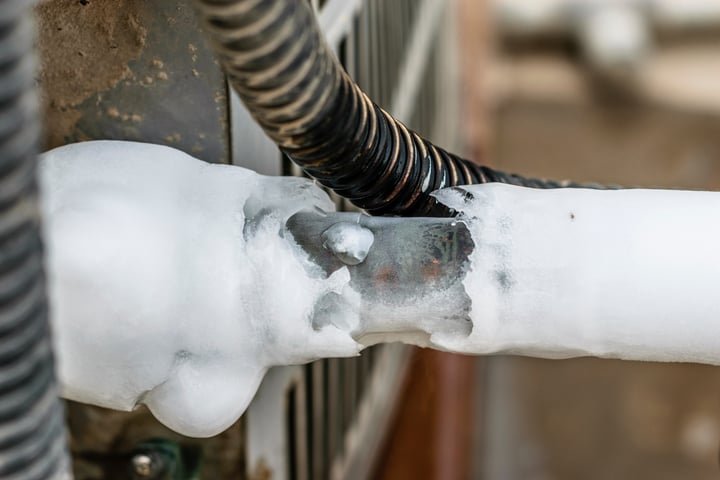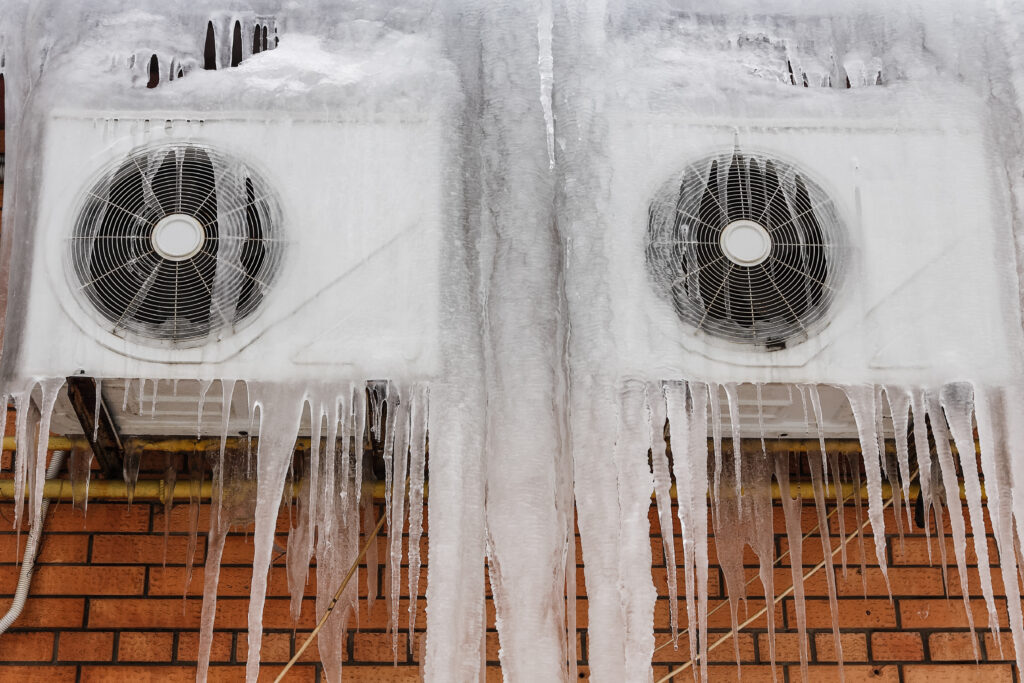The Air Conditioner Pipe Is Frozen - What Do I Do? Guidance for Homeowners
The Air Conditioner Pipe Is Frozen - What Do I Do? Guidance for Homeowners
Blog Article
This post below involving Air Conditioner Frozen? How To Fix your Frozen AC Line is quite enlightening. You should see for yourself.

Intro
Finding that your a/c pipeline is iced up can be concerning, specifically throughout warm summer months when you rely upon your air conditioning system one of the most. Comprehending what to do in such a circumstance is critical to stop additional damages to your air conditioning system and ensure your convenience inside.
Understanding the Causes
A number of variables can add to the cold of an air conditioning pipe. Understanding these causes can assist you deal with the concern efficiently.
Lack of Airflow
One common reason for an icy air conditioning pipeline is inadequate air movement. When the airflow over the evaporator coil is restricted, it can create the coil to drop below freezing temperature level, resulting in ice formation on the pipe.
Reduced Refrigerant Levels
Insufficient cooling agent degrees in your air conditioning system can also lead to a frozen pipe. Low cooling agent degrees can cause the pressure in the system to go down, leading to the cold of wetness on the evaporator coil.
Cold Weather Conditions
In cooler environments, freezing temperature levels outside can contribute to the cold of air conditioning pipes. If your a/c unit is not effectively shielded or if there are leakages in the ductwork, cool air can infiltrate the system, triggering the pipeline to ice up.
Dirty Air Filters
Dirty or stopped up air filters can limit air movement in your AC system, causing different problems, consisting of an icy pipe. It's important to replace or clean your air filterings system frequently to make certain proper airflow and stop ice buildup.
Indicators of a Frozen Air Conditioner Pipe
Recognizing the signs of a frozen air conditioning pipeline is essential for timely action.
Minimized Airflow
If you see a significant decline in airflow from your vents, it could suggest an icy pipe.
Ice Buildup on the Pipe
Noticeable ice accumulation on the refrigerant line or the evaporator coil is a clear indication of an icy a/c pipe.
Weird Sounds from the Unit
Unusual noises, such as hissing or gurgling, coming from your air conditioner device can signal that there's ice existing on the pipeline.
Immediate Actions to Take
When confronted with a frozen a/c pipeline, it's essential to act quickly to stop more damage to your air conditioning system.
Shutting off the air conditioning
The initial step is to shut off your air conditioner to prevent the system from running and worsening the problem.
Looking for Blockages
Inspect the area around the indoor unit for any obstructions that might be blocking air flow, such as furniture or drapes.
Thawing the Pipe
You can make use of gentle techniques like placing towels taken in warm water around the icy pipeline to help thaw it slowly.
Preventive Measures
Taking preventive measures can assist prevent future events of a frozen air conditioning pipe.
Routine Maintenance Checks
Arrange routine upkeep checks with an expert HVAC professional to make certain that your air conditioner system is running effectively.
Altering Air Filters
Frequently change or clean your air filters to prevent air flow restrictions and preserve optimum performance.
Protecting Exposed Pipes
If your a/c pipelines are subjected to chilly temperature levels, take into consideration protecting them to stop freezing during winter months.
Seeking Professional Help
If DIY approaches fall short to settle the concern or if you're unsure concerning just how to continue, it's best to look for help from a certified HVAC professional.
When DIY Methods Fail
If your attempts to thaw the pipe or address various other concerns are unsuccessful, it's time to contact a specialist.
Significance of Hiring a Professional HVAC Technician
A licensed HVAC service technician has the experience and devices needed to diagnose and repair issues with your air conditioning system securely and properly.
Final thought
Managing an icy AC pipeline can be an aggravating experience, yet knowing exactly how to respond can assist minimize damage and restore convenience to your home. By understanding the reasons, acknowledging the signs, and taking prompt activity, you can effectively attend to the concern and stop future incidents.
What to Do If Your AC Line Is Frozen
Make Sure All Supply and Return Air Vents Are Open
If you notice problems with airflow, the first thing you should do is check your supply and return vents. Supply vents distribute clean, conditioned air throughout your home. As this air becomes stale, it’s pulled into the return vent, where it’s reconditioned before being sent back out through the supply vent.
When these vents are closed, air won’t flow in the home. Before examining your AC, check the vents in every room and ensure they’re all open.
Check for a Dirty Air Filter
Another possible cause of limited airflow is a dirty air filter. Your air conditioner’s filters catch elements you don’t want to breathe in, such as dirt and dust. Over time, filters can become clogged, ultimately blocking air from flowing in and out. The lack of airflow can then cause the entire coil to freeze and will completely restrict any air from moving through it. The AC may need to be powered off for one to two days to allow the coil to thaw after replacing the filter to allow proper functioning of the unit. This debris can also accumulate on your AC’s evaporator coil, requiring a more serious repair. In general, air filters should be cleaned regularly (about every two weeks).
Assess Your Outdoor Unit
In addition to checking your AC, assessing the outdoor unit is a good idea. Also known as the condensing unit, it works with your interior unit to release heat outside. An issue with the outdoor unit can result in rising internal temperatures.
Overgrown Shrubs or Clogged Leaves
From leaves and twigs to shrubs and debris, there’s no shortage of outdoor elements that can accumulate around your condensing unit. When these elements get lodged inside the unit, they can block airflow. Fortunately, removing the blockage can solve the problem.
Sounds of a Broken Fan
Shrubs and leaves aren’t the only things that can impede your outdoor unit’s airflow. If the fan is broken, the unit won’t be able to properly get rid of heat — which means the internal temperature won’t go down. First, make sure the fan is spinning. If it is, check for the following sounds of a broken fan:
Buzzing Rattling Screeching Hissing Clicking Preventative Measures
Nobody wants to deal with a frozen AC line. In addition to causing problems with your air conditioner, they require professional repairs. On the bright side, there are preventative measures you can take to help ensure this issue doesn’t arise in the first place.
https://www.coopergreenteam.com/blog/what-to-do-if-ac-line-frozen

As a devoted reader on How can I fix an air conditioner’s frozen pipe?, I figured sharing that segment was essential. Make sure you take the opportunity to promote this article if you enjoyed it. Thanks for going through it.
Additional Resources Report this page